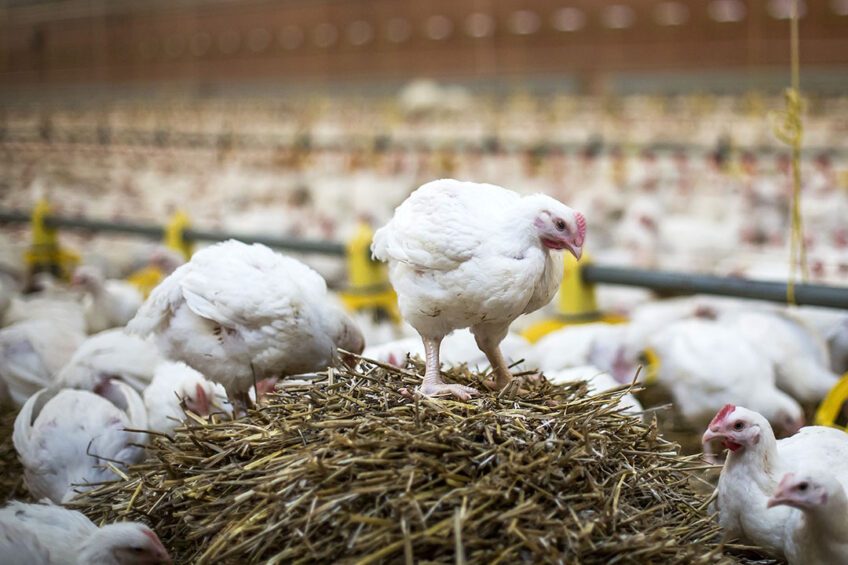Ways that slower-grown poultry might cut CO2 emissions

Up to 85% of slower-growing chicken’s carbon dioxide emissions come from feed if the Land Use Change (LUC) component is taken into account.
Based on calculations for a typical European broiler feed ration, 85% of the feed footprint is due to feed ingredients, with the remaining 15% stemming from processing and transport.
Speaking at the recent Hubbard Premium Forum in Evian, France, James Bentley, Hubbard technical director, told delegates that breed choice and efficiency were critical for reducing the global warming potential for slower-growing birds. “Feed is the major factor we can manipulate,” he stressed.
Possible mitigations included:
- Correct use of approved breed minimises total feed used.
- Correct protein content of the diet for the breed.
- Alternative ingredients.
- Adjust nutrient density to optimise cost and CO2.
- Look at circular/regenerative/low-carbon farming.
Dr Bentley said maintaining appropriate protein levels in rations was essential, especially around the amino acid percentages in the feed versus conventional broilers. For example, using lower protein diets for the Dutch Beter Leven 1*, adapted to the breed requirement, helps to reduce the impact of LUC ingredients like non-certified soya, using alternatives and certified soya.
Soya alternatives
While field beans have shown progress as an alternative protein source to soya, results have been mixed and major poultry operations need consistent inputs to maintain efficiency. There is also a large problem with supply chains for rapeseed, sunflower and legumes, meaning that some of the soya alternatives are not agronomically attractive to producers.
Other technologies like insects, PAP, algal protein, grass protein and yeast by-products are on the horizon but are not immediate solutions in Europe. There was a need to assess each product’s CO2 status versus certified soya, but there was also a long-term incentive to use them for their impact in regenerative/circular agriculture.
Local ingredients
Turning to nutrient density, Dr Bentley said the least-cost feed is high in energy, which means high in protein, and further needs a high soya percentage. The challenge ahead is to use lower nutrient density diets and avoid the need to use “nutrient dense” high protein ingredients like soya, with a high LUC, for Better Chicken Commitment broilers. Using more local ingredients and cereals as a percentage of total protein could be a way forward.
Low carbon footprint
One company that is producing a low carbon footprint for its chickens is Norwegian-based Norsk Kylling. Results of the lifecycle analysis completed in 2021 showed that the carbon footprint for raw chicken products produced by the company was 4.1 CO2 equivalent per kg – a lower carbon footprint than Norwegian-farmed Atlantic salmon.
Switching from faster-growing Ross birds to slower-growing Hubbard broilers led to a 1% decline in the carbon footprint. There was also lower feed consumption in rearing and layer farm production, reduced mortality, and reduced transport needs.
In summary, Dr Bentley highlighted the following feed GWP mitigations:
- Use the correct, approved breed for the concept – i.e., Redbro birds for Better Chicken Commitment.
- Feed conversion rates improved year-on-year by selection, using the best available technology.
- Ensure the diet protein percentage is optimised by the breed – don’t waste protein.
- Make the most of low-carbon farming ingredients.
- Changes due to the removal of LUC feed ingredients account for bigger changes in CO2 per kg live broiler than changes in the breed.
- Focus on low LUC ingredients to create a LUC dividend and decide how to balance this between welfare and other sustainability metrics.
- Higher welfare production can still be part of a Net Zero Strategy in Europe, but sustainability is more than 1 parameter.












